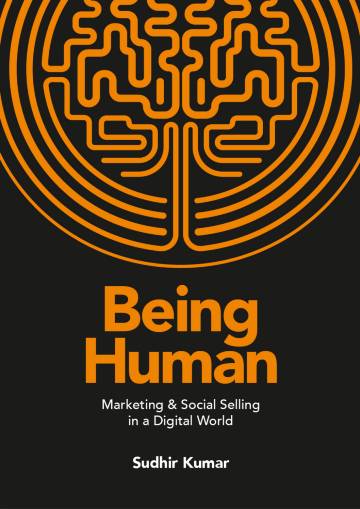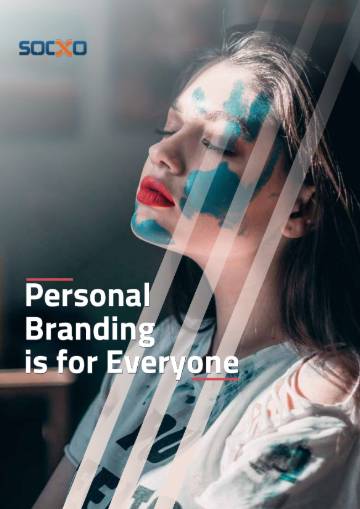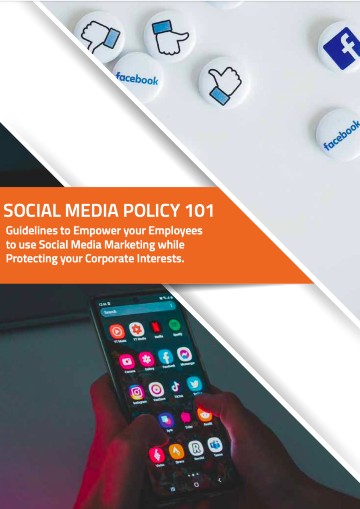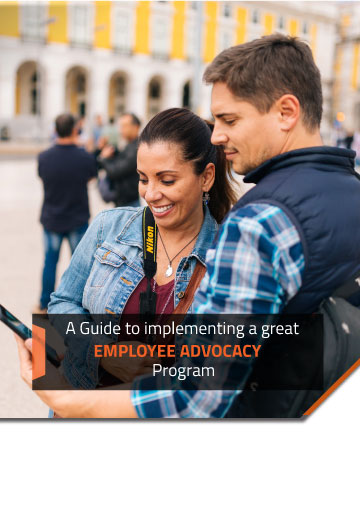
B2B Social Media Marketing is at the tipping point of success. While it may seem like an obvious way to use Social Media to generate reach, engagement, and conversions, it is not quite the same as it is used in B2C marketing. The techniques used and purpose of use are quite different. Ranging from standard posting to garnering personal branding, to social selling to generating conversions on content.
Index:
- Introduction
- Why Use Social Media For B2B Social Media Marketing?
- Everything That’s Wrong With Current B2B Social Media Marketing
- Building An Effective B2B Social Media Marketing Campaign
- Things To Consider While Designing A B2B Social Media Campaign
- In Closing
Introduction
Social media today stands at the forefront of everything personal, commercial, or artistic. It is no wonder that B2C has reimagined its marketing efforts successfully through social platforms. However, the B2B niche has been slower in catching up to the trends, relying on more traditional means of marketing, which aren’t working as well as they should.
Given that B2B social media marketing carries immense potential to break through the walls of convention, there is no need for businesses to invest in their aged counterparts anymore: especially when this report from LinkedIn establishes that 80% of B2B marketing leads come to your business from social media.
The fact is that there is no need for B2B social media campaigns to be uninteresting and full of industry jargon when they can be engaging and follow the latest trends like any B2C campaign. Social media today has the power to dive into every industry, allowing any business to tap into leads through this channel. It is an unexplored, open field in B2B that not enough companies manage to get right. Therefore, let’s dive into the nitty-gritty of B2B social media and how it can be converted into a high-volume lead funnel.
Why Use Social Media for B2B Social Media Marketing?
Social media isn’t only a staple for fashion or lifestyle bloggers; neither is it a domain meant purely for travelers or artists. Social media has the power to transform everyone: because there are real people connected to it from behind a screen. One of the primary reasons B2B hasn’t been able to utilize social media well is that they think social media is a realm of consumers, not businesses, and that this makes social media irrelevant as a suitable platform for B2B social media marketing.
Here are a few reasons to change your outlook on B2B Social Media Marketing.
1. You Find Business Partners on Social Media
Whether it is LinkedIn or Facebook, you are likely to find successful business partners from various industries leveraging social media to further the presence and essence of the brand they work with. These social platforms are where collaborative efforts are incepted; social media is where a majority of the networking happens. You can’t find and engage with brands at the scale that social media makes possible for you; you can practically communicate overseas and launch your franchise anywhere. For example, if you manufacture toothbrushes, you can try reaching out to retail outlets on social media to pitch your product to them. If they like it, they start keeping it in their stores.
2. Identify Your Consumer Pool On Social Media
The metrics that using social media for brand promotion let you track tell you a lot about the kind of consumers interested in your product. This metric is of high value when identifying your consumer base, as it helps you multiply your efforts to make your product ultimately reach them.
One mistake most brands are making is creating B2B social media content that doesn’t promote a product, rather only the brand. While it makes technical sense for a B2B strategy, it doesn’t appeal to the end-user – and such a post does nothing for the brand. A good social media post builds engagement and brand awareness and then moves on to deliver the product, rather than solely focusing on what a brand is all about. The ultimate objective of a social media campaign is to gain leads – and that is what a post should be built around.
3. Other Brands Are Watching Yours
The competition for gaining more consumers is touching the skies – brands are going the extra mile to better their best efforts to impress consumers. Social media has become an image-builder for brands, influencing the way the consumer buys things. Your B2B social media strategies are likely to be competing with other brands in your niche. This makes it necessary for you to formulate a B2B campaign that works for other businesses and the end-user. This is bound to give you an edge over others and get noticed by potential business partners.
Looking at how other businesses of your industry are faring with their B2B efforts will certainly give you an idea of the dos and don’ts for your campaign.
4. Followers Follow You for a Reason
If you have a profile on LinkedIn or a page on Facebook, you have followers interested in seeing your posts and content. Creating excessively technical posts with no real relevance to what your followers wish to see will only decrease your brand’s reach. This beats the whole point of being on social media.
A post that advertises your expertise in manufacturing toothbrushes (following the example earlier) does nothing for the majority of your followers who aren’t a business. B2B isn’t solely about isolating your potential business partners – it is about setting up a path for your products to move through and reach the end-user.
Making interesting content that reels a consumer into your brand creates value in your name, augmenting your relationship with other businesses. Call it mutual benefit.
Everything That’s Wrong With Current B2B Social Media Marketing
The one cardinal error businesses make while creating a B2B social media campaign is that it is only intended for other companies. This creates a loop of the ineffectiveness with the content that goes in a post, ultimately working to earn the indifference of the brand’s follower base.
1. Self-Image
Most B2B social media campaigns center on propagating an image that the brand perceives of itself; it is often serious, technical, and downright uninteresting to learn about. The campaigns thus come out similar, a bland reflection of the brand’s idea of itself. This needs to change.
The consumers don’t need to be told that your brand has been manufacturing toothbrushes for 50 years or that you have automated equipment or use CAD to design your products. This doesn’t exactly sound riveting. What consumers really want to know is if your toothbrushes have quality bristles that are gentle on the gums, for example.
Companies need to look at their brand through their consumer’s eyes and create campaigns that they can sympathize with. Consumers may not be interested in your automated manufacturing or CAD toothbrushes. However, they will definitely be interested in buying a toothbrush that feels ergonomically good in their mouth.
2. A Lack Of Humanity
Another problem with most B2B social media campaigns is that they sound too monotonous and robotic. Using language that features a lot of industry jargon and talks in third-person voice drives consumers further away from it. When the goal is to increase reach, it is important to first boost engagement – and it cannot happen without humanizing your posts a little bit.
A B2B campaign can achieve a lot by talking in the first person and introducing a face into the posts. For example, telling your consumers, “XYZ brand has been manufacturing toothbrushes for 50 years” isn’t as engaging as telling them, “We have been making people smile for half a century” with a happy face on it works miles better.
Humanizing your campaigns makes them much more relatable and honest, which works way better than run-of-the-mill B2B marketing.
3. Handling Campaigns Yourself
Another fundamental mistake brands make while designing B2B social media campaigns is thinking they can handle it themselves. While you may have industry specialists and professionals at your disposal, they may not know how social media is best leveraged.
This results in creating content that isn’t engaging, churning out dull pieces that sit on the social media page with barely any reach. It is important to be familiar with the social media landscape before launching a campaign, which necessitates hiring a social media professional instead of an industry specialist. You can have a specialist assist the social media professional to get the desired information across.
The fundamental difference here is in the way these two professionals approach social media – while the industry guy would know the functional approach, a social media guy would know the workings of a viral approach, which makes all the difference.
4. Focusing Solely On Specialty
One inherent practice that B2B social media chronically adopts is to focus only and solely on their specialty offerings or “the one thing.” It is a good thing to be unique, but there needs to be a degree of relatability that points a consumer back to your offering.
It is far more difficult to discover consumers interested in a toothbrush designed through CAD – on the contrary, you will find a hundred people interested in a toothbrush modeled on research and ergonomics. Widening the umbrella that encompasses the essence of your business and then leveraging the consumers roaming around the fringes gets you better reach.
There is a need to turn specialty into relatable and covers a wider base; when you have brought in some engagement, it is then possible to tell people about your core specialty.
5. Content Marketing Twists
According to the Content Marketing Institute, 91% of businesses use content marketing to boost engagement. This is an excellent tool, and consumers love it – images, videos, infographics; however, there is a catch. The suitability of a medium to rightly portray a brand depends on what products it is selling. For brand XYZ in toothbrush manufacturing, posting videos of the manufacturing process isn’t engaging; neither is posting pictures of the newest launches.
Instead, creating content with real humans who use that toothbrush – or better yet, who can testify to its success – goes a longer way than showing your consumers the manufacturing process.
Often, B2B social media marketing campaigns miss out on suitability in the content they post. This drastically reduces the effectiveness of the campaign.
Building An Effective B2B Social Media Marketing Campaign
It isn’t difficult to build a B2B social media marketing campaign that packs a punch. However, one needs to know a few handy pointers that guide one in the right direction. This is all to tap into the 46% of B2B buyers that begin their product-purchase journey on social media. It is this percentage that you need to target with your content.
Here are a few tips for building an effective B2B Social Media marketing campaign.
1. Select The Right Place To Be
Not all social media is for all kinds of businesses. Some industries may find LinkedIn more suitable for B2B social media marketing, while some (stationery products, for example) may find Instagram a better consumer pool. Depending on where the highest percentage of your consumers are likely to be, your B2B presence would change.
The best example of this is the difference between Twitter and Facebook. While consumers and B2B buyers use Facebook to discover brands, Twitter has become a venting place for consumer complaints. Leverage these subtle differences – advertise on Facebook and move all your grievances redressals to Twitter.
For the toothbrushes that XYZ brand manufactures, LinkedIn could be a good place to start. Follow the retailers you would like to sell your products with, and begin to build connections from here. When your products hit the market, you can start active consumer-focused marketing on other social media platforms.
2. Go Back To The Basics
For every piece of content you create for your B2B social media campaign, ask yourself two questions:
- Who is it for?
- Why would they want to watch/read it?
The post must return feasible answers to you. These are the fundamentals of creating a post. The target audience has the highest likelihood of initiating interaction with your brand, and if your post is not targeted towards engaging this consumer pool, it has failed already. The basis of creating an engaging post is found in the reason that your target audience follows your page on social media.
Your sales funnel is segmented into four major parts: awareness, interest, consideration, and sale. The posts on your social media should follow this step-by-step progression to allow your consumers some time to develop an interest in your brand. From awareness to identifying and relating to consumer problems, offering a solution, and finally driving a sale home.
You should also consider using “influencer marketing” albeit from a B2B context. We had written about this in great detail in this blog. We hope you find this useful.
- How many people are aware of your brand? Figures that tell you the reach of your post also answer this question. Did your brand name get mentioned anywhere? Was it tagged in another post? Track these figures to truly know how much brand awareness was created from your investment.
- Did people like your brand? This is different from the total number of comments or likes – metrics like how quickly your posts were liked or shared tell more about whether or not people like your brand. You can get 100 likes in 10 days or get 100 likes in 10 minutes – both the figures tell different things about a brand.
- Track conversions through social media. Sales are the ultimate goal – measure your ROI through the conversions, engagement, and brand awareness generated at the end of the day.
3. Observe The Indirect Benefit
All the posts on social media come with certain insights – metrics like:
- The number of likes received on each post
- The number of times it was saved or shared with other people
- The number of comments people posted on it
While they provide a good idea of how your content marketing performs, it isn’t the full picture. There are other indirect returns you can track that can help you create a more effective B2B social media strategy:
4. Get Employees Onboard
There is no better B2B Social Media Marketing strategy than getting your employees to vouch for your brand to the world. This human touch is unparalleled – since it comes from somebody inside, consumers treat it to eat it up. A casual post by a company employee talking about how great everything is (of course, by proper permission and authorization) goes a long way in building trust amongst consumers and clients.
Employee advocacy generates positive interest in consumers since the brand is being talked about in a good light by someone who has experienced it firsthand. The consumers treat this information as irrefutable – businesses can leverage this effectively through employee advocacy.
It is, however, important to establish a social media usage policy when it comes to posting about the brand by employees. Consistency in posts is the key.
Things to Consider While Designing a B2B Social Media Campaign
A few things are obvious: creating a B2B social media campaign centers around creating engaging content that isn’t plain vanilla and getting the clients talking about your brand. In addition, there are some things you could keep in mind that could help you:
- Businesses are already looking on social media. It is all about discoverability and engagement. Unless your post can achieve both, a B2B campaign wouldn’t be viable.
- Create interesting angles in your post that reel in more consumers. Tell stories, post pictures of the latest updates or excited employees, talk about breakthroughs or new launches – make your social media a wall of content to which users would be willing to give their time.
- According to Charles Cunningham, it works best when brands follow a forked approach to B2B in social media – Either Facebook or Instagram, coupled along with LinkedIn. This strategy covers all the ground – the interesting story and the technical parts as well. While discoverability is boosted on Facebook/Instagram, LinkedIn fills in with that much-needed professional accolade.
B2B Social Media Trendsetters to Glean From
To learn from the experiences of others, here are a few top-scorers in B2B you can glean inspiration from.
- Hubspot:
It is a challenge to tell marketers something they don’t already know as a resource platform for marketers. Hubspot does it right by marketing its resource pool, free usages, downloadable, and valuable resources that other marketers can use. They primarily use Facebook/Instagram.
- Shopify:
This brand does it right by educating through videos that entrepreneurs don’t need to hire many professionals to start selling their products. By advertising their ease-of-use and informational content, they drive conversions. They primarily use Facebook and YouTube.
- Airtable:
The content on this brand’s profile is all about who they are and what they can do for you. Offering easy spreadsheets and collaboration online, this no-nonsense brand merges aesthetic with ads and presents pleasing visuals to get customers to follow on. They mostly use Instagram.
- Square:
The largest processor of payments globally, this brand makes its content all about its clients by advertising how they are utilizing Square for their benefit. This community-first approach earns it a good badge. They mostly use Instagram.
In Closing
In essence, B2B doesn’t have to be boring; neither does it have to be all play and no work. An effective B2B social media campaign understands what needs to be achieved and follows the right path to achieve its desired goal. Building an image through social media takes time, but it is possible with a good strategy that is thought out based on sound fundamentals.
In a nutshell, aim to:
- Create engaging and relatable content
- Be inclusive – clients, customers, employees
- Make it about the ‘who’ and the ‘why.’
- Always know where the campaign is leading to
Follow these pointers, and you are on your way to a successful B2B social media strategy!























